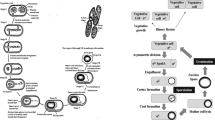Summary
In this study, the sterilizing effect of atmospheric pressure nonequilibrium plasmas (APNPs) on Neisseria gonorrhoeae (N. gonorrhoeae) was preliminarily examined and the possible mechanisms were explored. N. gonorrhoeae FA1090, FA19 and MS11 were treated by APNPs and their survival rate was analyzed by using CFUs counting and structurally studied by laser scanning confocal microscopy. The morphological changes of bacterial cell membrane and wall were studied under TEM. Our results showed that APNPs had strong sterilizing effect on N. gonorrhoeae. The survival rate of MS11 in N. gonorrhoeae liquid medium was 60.65% after disinfection with the APNPs for 5 min, whereas, the survival rate of FA19 was 92.60% and the rate of FA1090 was 96.40%. The survival rate of MS11 was 21.13% after exposure to APNPs for 6 min, whereas the survival rate of FA19 was 31.60% and the rate of FA1090 was 91.00%. N. gonorrhoeae was structurally damaged after treatment with APNPs. It is concluded that APNPs is able to effectively and quickly kill the N. gonorrhoeae, and the killing effect is related to the architectural damage of cell membrane.
Similar content being viewed by others
References
Herrmann HW, Henins I, Park J, et al. Dicontamination of chemical and biological war fare (CBW) agents using an atmospheric pressure plasma jet (APPJ). Phys Plasmas, 1999,5(6):2284–2289
Sharma A, Pruden A, Yu Z, et al. Bacterial inactivation in open air by the afterglow plume emitted from a grounded hollow slot electrode. Environ Sci Technol, 2005,39(1):339–344
Kyi MS, Holton J, Ridgway GL. Assessment of the efficacy of a low temperature hydrogen peroxide gas plasma sterilization system. J Hosp Infect, 1995,31(4):275–284
Moreira AJ, Mansano RD, Pinto TJA, et al. Sterilization by oxygen plasma. Appl Surface Sci, 2004,235(1–2):151–155
Venezia RA, Orrico M, Houston E, et al. Lethal activity of nonthermal plasma sterilization against microorganisms. Infect Control Hosp Epidemiol, 2008,29(5):430–436
Watts AE, Fubini SL, Vernier-Singer M, et al. In vitro analysis of nonthermal plasma as a disinfecting agent. Am J Vet Res, 2006,67(12):2030–2035
Kamgang-Youbi G, Herry JM, Meylheuc T, et al. Microbial inactivation using plasma-activated water obtained by gliding electric discharges. Lett Appl Microbiol, 2009,48(1):13–18
Deng S, Ruan R, Mok CK, et al. Inactivation of Escherichia coli on almonds using nonthermal plasma. J Food Sci, 2007,72(2):62–66.
Stoffels E, Kieft IE, Sladek RE, et al. Gas plasma treatment: a new approach to surgery? Crit Rev Biomed Eng, 2004,32(5–6):427–460.
Chen HX, Wu Z, Chen R, et al. Typing of Neisseria gonorrhoeae Opa and NG-MAST gene of 12 pairs of sexual contact gonorrhea patients in China. J Huazhong Univ Sci Technolog [Med Sci], 2008,28(4):472–475
Benstaali B, Boubert P, Cheron BG, et al. Density and rotational temperature measurements of the OH and NO radicals produced by gliding arc in humid air. Plasma Chem Plasma Proc, 2002,22(4):553–571
Benstaali B, Moussa D, Addou A, et al. Plasma treatment of aqueous solutes: some chemical properties of gliding arc in humid air. Eur Phys J Appl, 1998,4(2):171–179
Laroussi M, Leipold F. Evaluation of the roles of reactive species, heat and UV radiation in the inactivation of bacterial cells by air plasmas at atmospheric pressure. Int J Mass Spectrom, 2004,233(1–3):81–86.
Moreau M, Feuilloley MGJ, Veron W, et al. Gliding arc discharge in the potato pathogen Erwinia carotovora subsp. atroseptica:mechanism of the lethal action and effect on membrane-associated molecules. Appl Environ Microbiol, 2007,73(18):5904–5910
Moisan M, Barbeau J, Moreau S, et al. Low temperature sterilization using gas plasmas: a review of the experiments, and an analysis of the inactivation mechanisms. Int J Pharmaceutics, 2001,226(5):1–21
Ohshima T, Sato M, Saito M. Selective release of intracellular protein using pulsed electric field. J Electrost, 1995,35(11):103–112
Elmnasser N, Guillou S, Leroi F, et al. Pulsed-light systemas a novel food decontamination technology: a review. Can J Microbiol, 2007,53(7):813–821
Boudam MK, Moisan M, Saoudi B, et al. Bacterial spore inactivation by atmospheric-pressure plasmas in the presence or absence of UV photons as obtained with the same gas mixture. J Phys D: Appl Phys, 2006,39:3494–3507
Marisol DL, Rodolfo JB, Carlos AM, et al. Kinetics of bacteria inactivation employing UV radiation under clear water conditions. Chem Eng J, 2006,121(2),135–145
Kuzmichev AI, Soloshenko IA, Tsiolko VV, et al. Features of sterilization by different type of atmospheric pressure discharges. In proceedings of the International Symposium on High Pressure, Low Temperature Plasma Chemistry, Hakone VII, Germany: Greifswald, 402–406
Fridman G, Brooks AD, Balasubramanian M, et al. Comparison of direct and indirect effects of non-thermal atmospheric-pressure plasma on bacteria. Plasma Process Polym, 2007,4(4):370–375
Baier RE, Carter JM, Sorenson SE, et al. Radiofrequency gas plasma (glow discharge). Disinfection of dental operative instruments, including handpieces. J Oral Implantol, 1992,18(3):236–242
Wu ZH, Chen HX, Chen RY, et al. Coversion of clinical multiple drug-resisteant isolates of Neisseria gonorrhoeae into drug-sensitve ones by using EGS technique. Acta Med Univ Sci Technol Huazhong, 2008,37(3):368–371
Mendis DA, Rosenberg M, Azam F. A note on the possible electrostatic disruption of bacteria. IEEE Transactions on Plasma Sci, 2000,28(4):1304–1306
Author information
Authors and Affiliations
Corresponding author
Additional information
Yating TU and Li XU contributed equally to this work.
This project was supported by grants from the National Natural Sciences Foundation of China (No. 30700717) and research Fund for the Doctoral Program of Higher Education of China (No. 20070487140).
Rights and permissions
About this article
Cite this article
Tu, Y., Xu, L., Yu, Y. et al. Effect of atmospheric pressure non-equilibrium plasmas on Neisseria gonorrhoeae . J. Huazhong Univ. Sci. Technol. [Med. Sci.] 30, 226–230 (2010). https://doi.org/10.1007/s11596-010-0219-9
Received:
Published:
Issue Date:
DOI: https://doi.org/10.1007/s11596-010-0219-9




